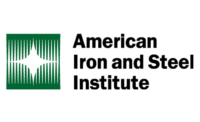As a code referenced document, GA-216 Application and Finishing of Gypsum Panel Products is revised every three years. Beginning in 2018, GA-216 will be revised and released to coincide with the 2021 code revision cycle and to better align with the Association’s other code-referenced documents, namely GA-600 Fire Resistance and Sound Control Design Manual and GA-253 Application of Gypsum Sheathing. GA-216 is referenced in the International Building Code (and other “I-Codes”) as well as NFPA 5000 as a standard for the application and installation of gypsum panels.
Architects and specifiers consult and reference GA-216 in construction documents to guide installation of gypsum panels over appropriately spaced and installed wood or steel framing and to determine when, and if, control joints should be used. Specialty contractors rely on GA-216 to ensure proper handling and storage of gypsum panels on the jobsite and appropriate installation and finishing methods. Application and Finishing of Gypsum Panel Products dictates the layout of gypsum panel products, including proper placement of joints around window and door openings, and selection of fastener types and fastener spacing. GA-216 also serves as a guidance document for building inspectors.
The 2018 specification provides appropriate installation methods for the various types of gypsum panels—from the more common ½-inch and type X wallboards to special performance gypsum panels such as glass mat water-resistant gypsum panels and abuse-resistant and impact-resistant gypsum panels. New to the 2018 specification is clarification of language on steel studs and abuse-resistant and impact resistance panel products and updated criteria for panel installation over concrete. Direct adhesion to concrete is no longer acceptable; panels must be installed on framing. Also, GA-223 Gypsum Panel Products, Types, Uses, Sizes, and Standards has been added to the appendix as a reference to ASTM standards and GA publications that provide additional information and specifications.
All GA publication, including approximately thirty free technical documents, are available in the Association’s bookstore. Technical documents, publications, and answers to common questions can be found at gypsum.org.






